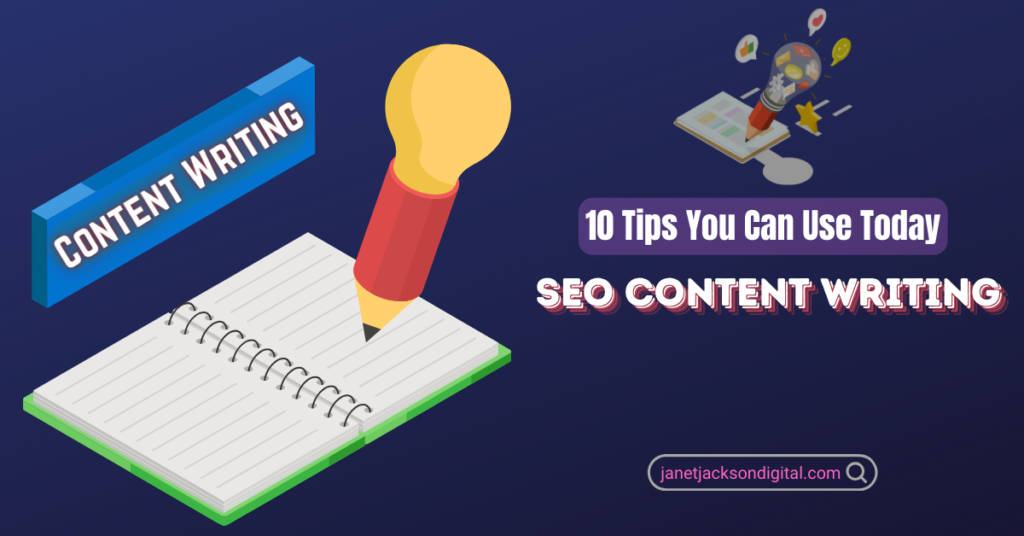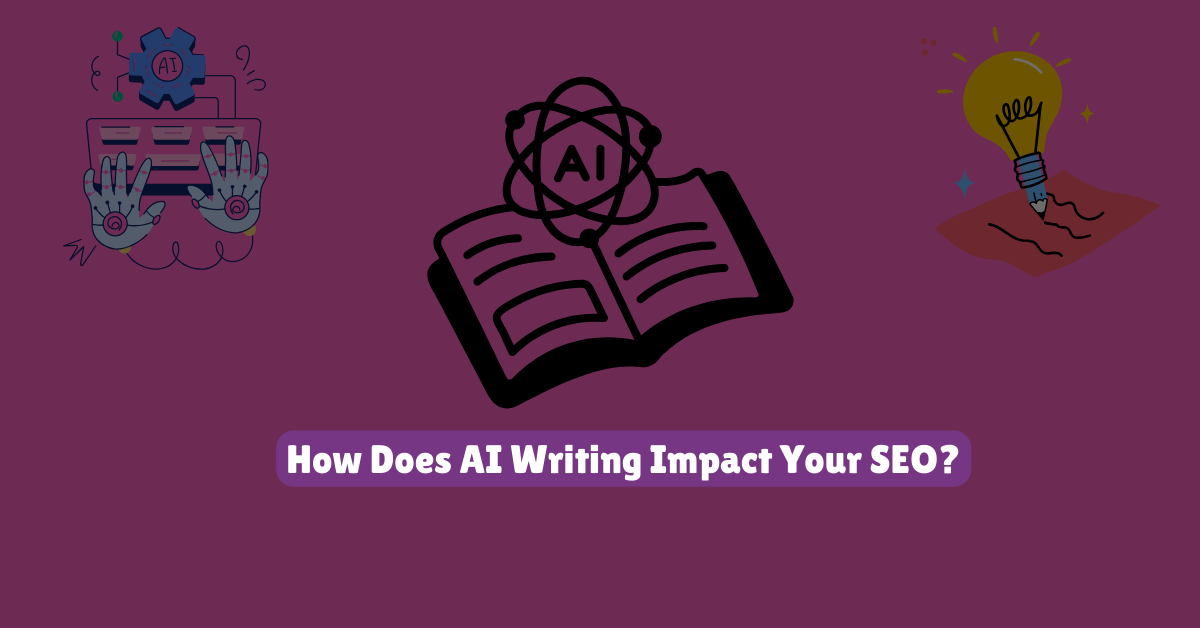
Are you experiencing difficulties achieving a higher search engine ranking for your website? Be at ease—we’ve got you covered! This post will provide you with ten doable suggestions to help you become an expert in SEO content creation and raise your website’s ranking in search results. These pointers are intended to increase your website’s exposure and organic traffic, regardless of your level of experience as a writer.
What does SEO content writing entail?
authoring material for search engines while keeping it interesting and useful is known as SEO content authoring. It involves using focused keywords and strategies to improve your content’s visibility to search engines and, eventually, your chances of ranking higher in search results. Since you have to write for both readers and search engine algorithms, this kind of writing calls for a blend of technical expertise and creativity.
SEO’s significance for content creation
Because SEO makes it easier for potential readers and consumers to find your website, it is essential to content writing. When you optimize your content for search engines, you raise the likelihood that your website will rank higher in search results and attract more organic traffic. strategy. You may draw in a relevant audience and raise the online exposure of your website by focusing on particular keywords and producing material of the highest caliber.
Determine Which Terms to Target Using Keyword Research
You must optimize your content for the terms and phrases that your target audience actually uses if you want it to rank highly in search results. ### To find heavily searched terms that you can truly help with, do in-depth keyword research.
Use resources such as Moz Keyword Explorer, SEMrush, and Google Keyword Planner to identify keywords that have 500–5,000 monthly searches related to your topic. Instead than merely using “SEO tips,” try using lengthier, more precise terms like “SEO content writing tips.” ###Add these keywords to your page’s headings, title tag, URL, and body text two or three times.
Avoid over-optimization by using keywords in an artificial way. Make use of synonyms and related terms as well, such as “writing for search engine optimization” and “optimizing content for search.” This facilitates search engines’ understanding of your topic and the kind of content you provide.
Pay attention to the terms that your target audience is probably using to find solutions or answers. A decent keyword to include if you’re writing for seasoned SEOs would be “Technical SEO audits.” “Simple SEO strategies” or “SEO basics” are preferable choices for small business owners who are new to SEO.
Select keywords that you can actually assist with and rank for. You probably won’t rank well for a term like “SEO services,” which has millions of monthly searches but fierce competition. Instead, focus on more niche keywords that align with your area of expertise and the benefits you offer to readers.
You may produce content that benefits your target audience and ranks highly in search results by conducting thorough keyword research. And that’s what excellent SEO content writing is all about.
Optimize Your Title Tags by Keeping Them Brief But Descriptive
Optimized title tags are essential for a higher search engine ranking. In search engine results pages, your title tag serves as your page’s clickable headline (SERPs). It should preferably contain your main keyword and be both detailed and succinct.
Don’t exceed 60 characters.
Keep your title tags under the allotted 60 characters, as this is when search engines typically stop showing them. Prioritize your primary term and then include context. “Content Writing Tips: 10 Ways to Improve Your Skills,” for instance, has 56 characters.
Don’t forget to include your goal keyword
The title tag should contain your keyword as near to the beginning as feasible. Use “content writing” as your keyword at the beginning. Take “Content Writing: How to Rank Higher in Search Engines,” for instance.
Make it captivating
Clicks and attention should be generated by your title tag. Make use of dynamic verbs and persuasive wording. For instance, “10 Must-Know Secrets to Boost Your Rankings in Content Writing.”
An optimized meta description, which appears as a snippet beneath your title in search engine results pages, combined with a strong title tag can greatly raise your click-through rate. Creating compelling title tags will come naturally to you with some time and effort. If you persevere, your material will soon begin to rank higher!
You may improve organic traffic to your content and raise your exposure in search engine results pages (SERPs) by optimizing your title tags and meta descriptions with the correct focus. Don’t you think that’s worth the effort now? Your ranks will appreciate you if you continue to practice and optimize!
Create Headings That Grab Attention and Lead Readers Into Your Content
You have the chance to captivate readers as you lead them through your information with the headlines you select. Consider your headings to be little road signs that point traffic in the direction you want it to travel.
Select terms that people might use to find you.
Make sure your headlines highlight crucial terms and phrases that your intended audience might use to find information about your subject. Examples of headlines that contain keywords that readers might search for are “10 Must-Have Tools for SEO Writing” and “How to Rank Higher in Google.”
Make the headings readable
Aim for 3 to 6 words for your headings to make them scannable and brief. Shorter headlines are more enticing since readers will scan them first to decide what material they want to go into. For headlines, capitalize the first letter of each word and use title case as well. They are therefore simpler to read rapidly.
To arrange the content, use numbers.
If your information is organized into steps or a sequence, make sure to indicate this progression in your headings by using numbers. Take into account the following: 1. Research Your Keywords; 2. Optimize Your Title and URL; and 3. Pay Attention to Your Opening Paragraph. Readers are assisted in knowing what order to read the content by this numbering.
Pose a query
Headings that pose a compelling question entice readers to read the entire section in order to get the solution. For instance, “What Are the Latest SEO Trends?” or “How Can You Rank Higher Faster?” A sense of mystery is created by questions, which entice readers to continue reading.
By following these suggestions, you can improve the readability of your text and assist readers in finding the information they require. Developing interesting, reader-friendly material requires strong headlines. Take your time while creating headlines that draw readers in and guide them to the desired destination.
Incorporate Useful Photos and Graphics to Interrupt Text and Keep Readers Interest
Including images in your writing is essential to maintaining reader interest and enhancing comprehension. Use a range of material to make your text come to life, including screenshots, graphs, charts, images, and pictures.
Pictures
Pictures grab readers’ attention right away and make your points easier for them to picture. Include screenshots of the user interfaces of each social media network, for instance, if you’re writing about the newest ones. If you’re writing about a recent technological advancement, including a picture of the item. Just make sure that any pictures you use are of the highest caliber and are not subject to any restrictions.
Infographics
Infographics are an excellent means of presenting facts, figures, chronologies, or procedures in a comprehensible visual style. Make an infographic out of all the data and figures you have to give. Readers would like it if you condense and display the information visually.
Graphs & Charts
Readers can quickly see trends and relationships in numerical data by glancing at charts and graphs. They transform intelligible information from raw data. Depending on what best suits your data, use line, bar, or pie charts. Just make sure the data is easy to read and your charts have appropriate labels.
Your content will be far more readable and engaging for readers if it contains a range of pertinent images, graphics, photos, and other visual media. Long sections of content are broken up and eye breaks are given. Additionally, the pictures aid in the rapid transmission of concepts and ideas that would require lengthy text explanations.
Therefore, don’t communicate with your audience only by words. To develop dynamic, interesting content that performs highly in search results, use graphics whenever feasible. It will become second nature to look for opportunities to incorporate visual media into your content with practice. Your audience will appreciate it.
Get More Eyes on Your Rank-High Content by Promoting It
It’s time to share your fantastic content now that it has been produced. In order to raise your content’s ranking and increase the number of people who see it, you must promote it.
Post on Social Media
Share your content on social media sites like Facebook, Twitter, and LinkedIn where people who are interested in you hang out. Provide a link, a captivating image, and a fascinating statistic or quotation from the article. Interact with people who share or leave comments on your work.
Create Backlinks
Links referring back to your content from other reputable websites are known as backlinks. Speak with influential people in your field and request that they share and link to your content. Provide a link to your material when you leave a comment on related blog posts. Ensure that any links you create come from reliable, high-quality websites.
Promotion by Email
If you have an email list, send a message introducing your most recent material to them. Add a link, an image, and a synopsis. Request that your viewers post the article to their social media accounts as well. Ensure that any links you create come from reliable, high-quality websites.
Bloggers on Guest Sites
If you have an email list, send a message introducing your most recent material to them. Add a link, an image, and a synopsis. Request that your viewers post the article to their social media accounts as well. Among the best ways to boost traffic is through email.
Think About Sponsored Advertising
After your content starts to get some organic traction, you can use networks like Outbrain and Taboola for content promotion or sponsored advertisements on social media to increase the reach of your material. Invest in paid promotion only in cases where the material is excellent and offers readers genuine value.
Although it requires time and work, content promotion is worthwhile. Your content will rank better in search results and acquire more authority on your website the more people discover and share it. If you keep producing excellent material and spreading the word, people will turn to your site as a trusted source!
Conclusion
That brings us to our list of ten tips for generating better SEO content. You’ll quickly rise in the rankings if you put them into practice. Just keep in mind that it’s a race, not a sprint. While you shouldn’t count on instant success, you should continue to produce excellent content that is optimized for both people and search engines. The outcomes are inevitable. Continue to learn, to optimize, and to deliver genuine value through your material. You are capable of this! Go now and start controlling those search engine optimization results pages.

My name is Janet Jackson Seo and I work as a SEO Expert. I appreciate the process of developing an innovative approach and employing logic, particularly when it concerns future studies and SEO optimization. As an SEO expert I have known how to set up SEO campaigns fully and how to monitor their achievements.





